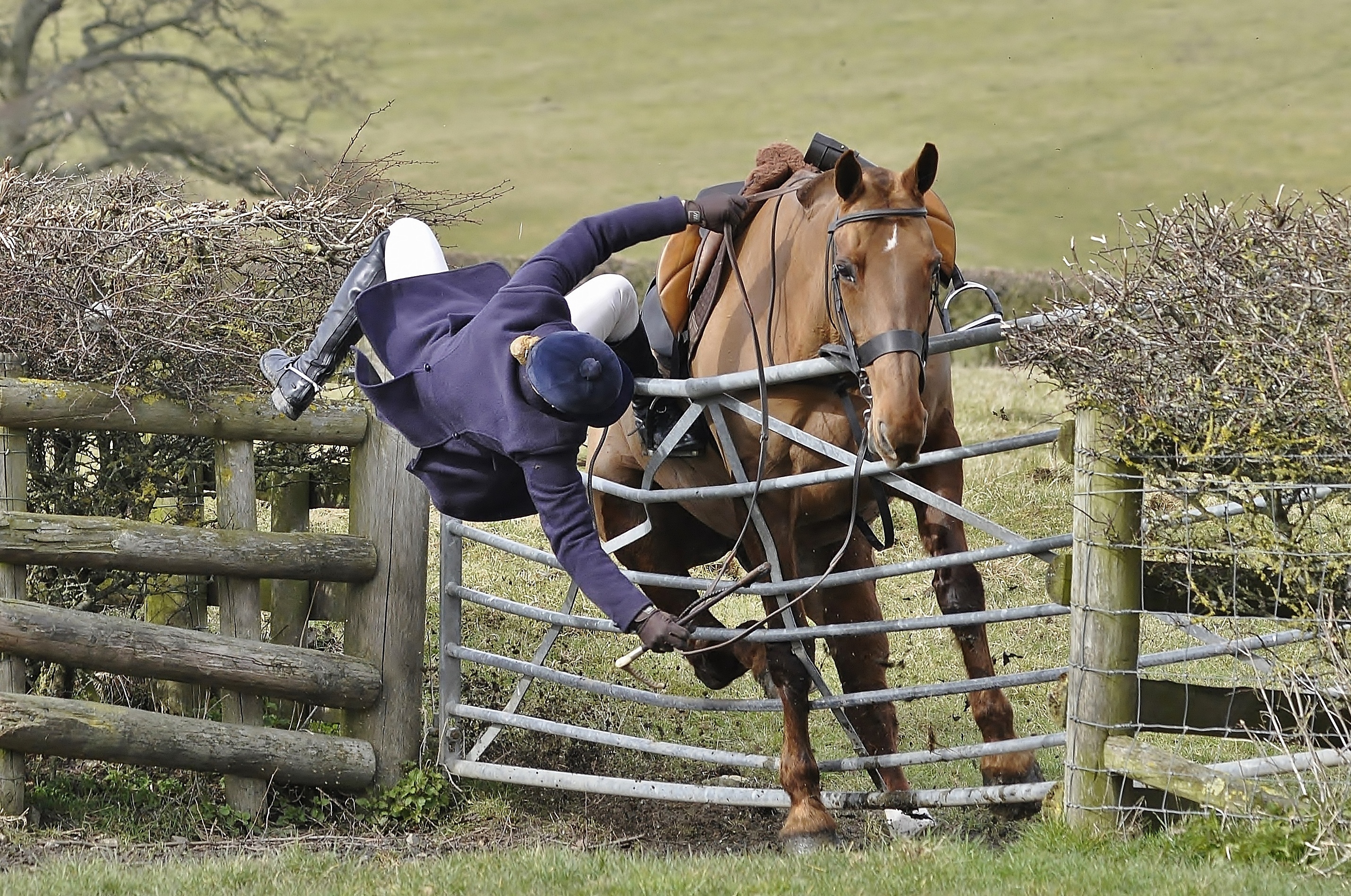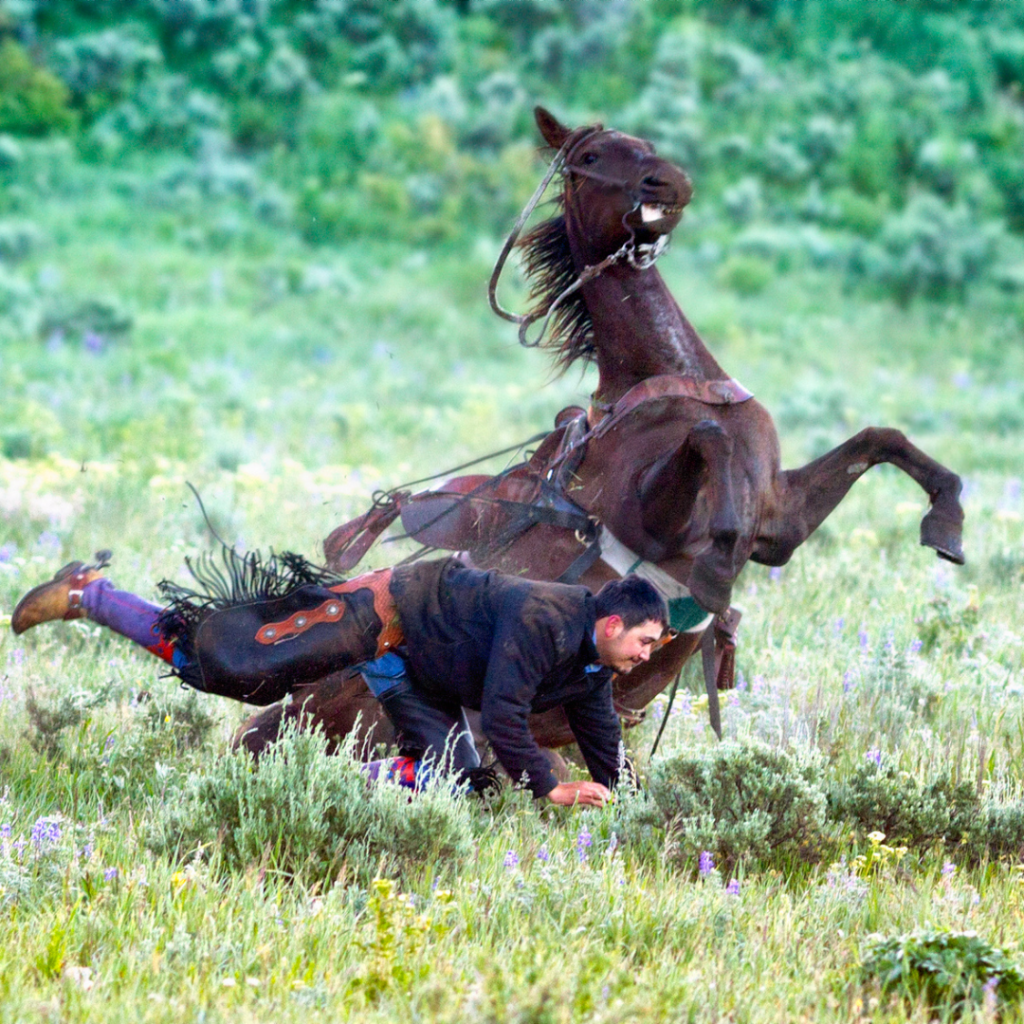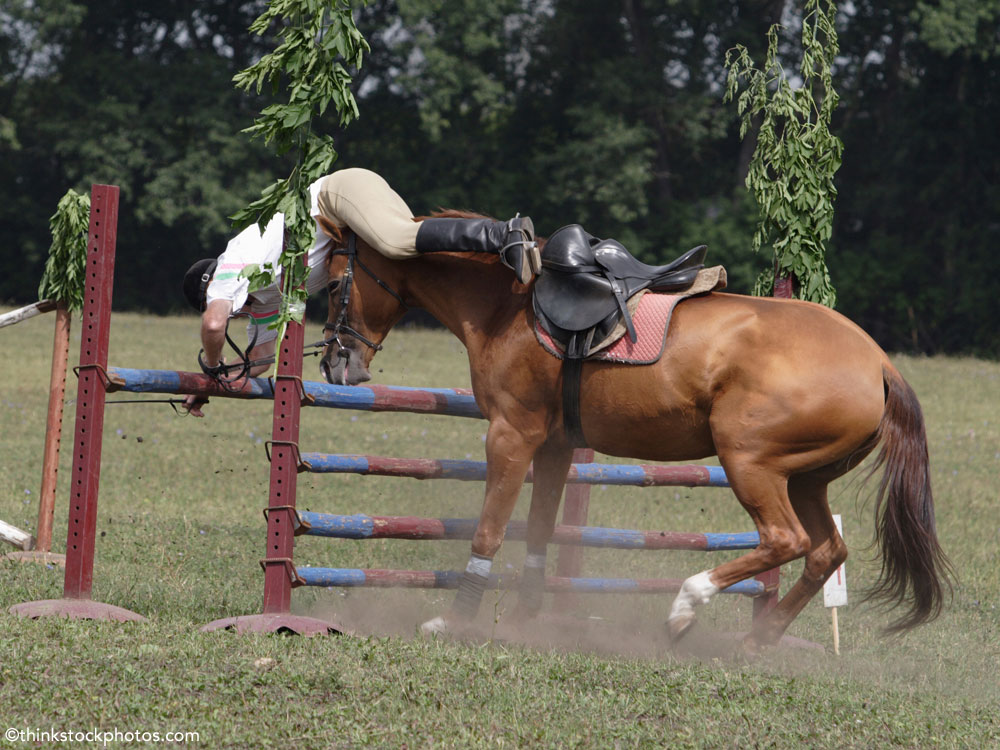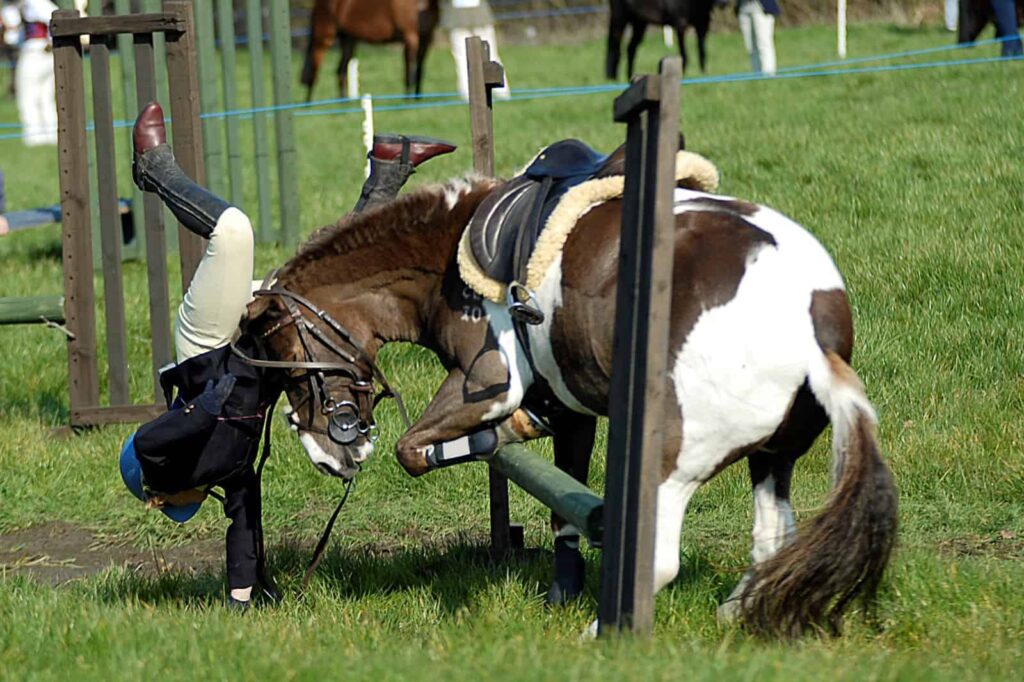Have you ever wondered what to do in case of a horseback riding accident? It’s a topic that not many people like to think about, but it’s crucial to know how to handle such situations safely. In this article, we’ll delve into the topic of horseback riding accidents and provide you with some valuable information and tips on how to handle them effectively.
When it comes to horseback riding accidents, it’s important to remember that prevention is key. We’ll discuss some precautionary measures that you can take to minimize the risk of accidents happening in the first place. However, accidents can still occur despite our best efforts. We’ll also provide guidance on what to do immediately after an accident, including assessing the situation, ensuring safety for both the rider and the horse, and seeking appropriate medical attention if necessary.
This article will be a comprehensive guide on how to handle horseback riding accidents, covering everything from preventative measures to post-accident procedures. By the end of it, you’ll have a better understanding of how to stay safe while enjoying your horseback riding adventures.
How to Handle Horseback Riding Accidents
Horseback riding is a thrilling and exhilarating activity that allows you to connect with nature and experience the freedom of riding a majestic horse. However, like any sport or recreational activity, horseback riding carries its fair share of risks. Accidents can happen, whether you are a beginner or an experienced rider. It is essential to be prepared and take necessary precautions to ensure your safety and minimize the chances of accidents.
In this article, we will explore different types of horseback riding accidents and provide valuable tips on how to prevent them. We will also discuss the importance of proper training, creating a safe riding environment, and handling and controlling the horse effectively. Moreover, we will delve into the necessary emergency procedures, common injuries resulting from accidents, and steps to recover and rehabilitate after an accident. Lastly, we will touch upon the significance of safety awareness and the legal considerations and insurance that riders should be aware of.

Types of Horseback Riding Accidents
Falls from the horse
Falling off a horse is one of the most common accidents riders face. It can happen when a rider loses balance, the horse spooks, or during challenging maneuvers such as jumps. Falls can result in various injuries, such as sprains, fractures, and head injuries.
Collision accidents
Collision accidents occur when two riders or a rider and an object collide. These accidents can happen during group riding or if a rider is unable to maintain control of the horse. They can lead to severe injuries, including fractures, internal injuries, and concussions.
Kick and trample accidents
Horses are powerful animals, and their kicks and tramples can cause serious harm. Accidents of this nature often occur when a rider is standing too close to the horse’s hind legs or when grooming or handling the horse. Bruises, contusions, and internal injuries are common in kick and trample accidents.
Equipment failure accidents
Equipment failure accidents happen when riding gear or equipment malfunctions. This can include the breaking of reins, stirrups, or saddles. Riders can be thrown off balance or lose control of the horse, leading to falls and injuries.
Preventing Accidents through Proper Gear
To minimize the risk of accidents, it is crucial to choose and use appropriate gear when horseback riding. Here are some essential tips to keep in mind:
Choosing a well-fitting helmet
Wearing a helmet is vital for protecting your head in case of a fall or collision. Ensure that the helmet fits securely and snugly on your head, covering the back and sides completely. Replace helmets that have been involved in a fall or have been damaged.
Wearing appropriate footwear
When riding, it is essential to wear sturdy boots or shoes with a smooth sole and a small heel. This helps provide grip and prevents your foot from slipping through the stirrups. Avoid wearing open-toed shoes or shoes with a flat sole, as they can increase the chances of accidents.
Using safety stirrups
Safety stirrups are designed to release a rider’s foot in the event of a fall, preventing the rider from being dragged along by the horse. Invest in safety stirrups that have a release mechanism and ensure they are properly adjusted to your foot size.
Selecting a properly fitting saddle
An ill-fitting saddle can lead to discomfort and imbalance, increasing the chances of accidents. Make sure your saddle fits both you and your horse correctly. Consult with a professional saddle fitter if you are unsure about the fit or have any concerns.

Importance of Proper Training for Riders
No matter your level of experience, receiving proper training is paramount for safe horseback riding. Here are some essential aspects to consider when it comes to training:
Finding a qualified instructor
Working with a qualified riding instructor is crucial for beginners and experienced riders alike. An instructor can teach you proper riding techniques, ensure your safety, and help you build confidence and skill.
Learning proper riding techniques
Learning and practicing proper riding techniques, such as correct posture, balance, and rein and leg aids, can significantly reduce the chances of accidents. Focus on building a solid foundation and gaining control over your movements while riding.
Understanding horse behavior and body language
Knowing how to interpret and respond to a horse’s behavior and body language is essential for maintaining control and preventing accidents. Learn to recognize signs of stress, fear, or discomfort in horses and adjust your approach accordingly.
Developing balance and coordination skills
Maintaining balance and coordination while riding is crucial for both your safety and the well-being of the horse. Regular exercises and training sessions that help improve your balance and coordination will enhance your riding abilities and reduce the probability of accidents.
Creating a Safe Riding Environment
Taking steps to maintain a safe riding environment is vital for preventing accidents. Here are some ways you can ensure a safe riding environment:
Maintaining well-groomed riding trails
Regularly inspect and maintain riding trails to remove any obstacles such as fallen branches, rocks, or uneven terrain. Keeping the trails well-groomed provides a safer and more enjoyable riding experience.
Clearing obstacles and hazards
Before riding, take the time to clear any obstacles or hazards in the riding area, including loose wires, low-hanging branches, or debris. Regularly inspect fences, gates, and other structures for security and integrity.
Securing fences and gates
Ensure that all fences and gates in the riding area are secure and properly maintained. Loose or damaged fencing poses a risk of the horse escaping or injuring itself, potentially causing accidents.
Ensuring adequate lighting in riding areas
Riding in poorly lit areas increases the chances of accidents, especially during evenings or in dimly lit indoor arenas. Install adequate lighting in riding areas to ensure visibility and minimize the risk of tripping or collision accidents.

Taking Precautions while Mounting and Dismounting
Mounting and dismounting are critical moments that can lead to accidents if not done properly. Here are essential precautions to take during these moments:
Using mounting blocks or assistance
Using a mounting block or seeking assistance from a helper can significantly reduce the strain on both you and the horse during mounting. Mounting from an elevated surface reduces the chances of slipping and falling.
Avoiding sudden movements
Avoid sudden and jerky movements while mounting or dismounting, as they can startle the horse and potentially lead to accidents. Move slowly and deliberately, ensuring that your horse is prepared and calm.
Ensuring proper stirrup length
Before mounting, check that your stirrups are properly adjusted to the appropriate length for comfort and safety. Improper stirrup length can affect your balance and stability while riding.
Disengaging from the horse slowly
When dismounting, disengage from the horse’s back slowly and gently. Avoid jumping off or abruptly leaving the saddle, as this can startle the horse and lead to unnecessary accidents.
Proper Handling and Control of the Horse
Having effective control over your horse is essential for minimizing the chances of accidents. Here are some tips for proper handling and control:
Using correct rein and leg aids
Learn and practice correct rein and leg aids to communicate with your horse effectively. Clear and consistent signals help maintain control and prevent confusion or unintended movements.
Maintaining a balanced posture
Maintaining a balanced posture while riding is crucial for both your safety and the horse’s well-being. A balanced posture helps distribute your weight evenly and minimize the chances of falling or putting unnecessary strain on the horse’s back.
Practicing emergency stops and turns
Regularly practice emergency stops and turns to ensure that your horse responds promptly to your cues. This helps prepare both you and the horse for unexpected situations where quick and accurate responses are necessary.
Being aware of the horse’s mood and behavior
Pay attention to your horse’s mood and behavior during riding. Understanding their body language and recognizing signs of stress, fatigue, or discomfort allows you to adjust your riding accordingly and prevent potential accidents.

Safety Precautions during Group Riding
Group riding can be an enjoyable experience, but it requires additional precautions to ensure everyone’s safety. Here are some safety measures to keep in mind during group riding:
Maintaining appropriate spacing between riders
Maintain a safe distance between horses to prevent collisions and minimize the risk of one horse kicking or trampling another. Follow the group leader’s instructions and adapt your speed and spacing accordingly.
Using hand signals and verbal communication
Clear and consistent communication among riders is crucial during group riding. Use hand signals to indicate changes in direction or speed, and communicate verbally when necessary. This helps enhance coordination and prevent accidents.
Following the lead rider’s instructions
When riding in a group, always follow the lead rider’s instructions and cues. The lead rider has a better perspective of the terrain and can guide the group through potential hazards. Trust their judgment and follow their lead.
Keeping a steady and controlled pace
Maintain a steady and controlled pace during group riding to minimize the chances of accidents caused by sudden changes in speed or movements. Avoid rushing or engaging in reckless riding behavior that can endanger yourself or others.
Emergency Procedures for Horseback Riding Accidents
Despite taking all necessary precautions, accidents can still occur. Knowing how to handle emergency situations can make a significant difference in the outcome. Here are essential emergency procedures to follow:
Staying calm and assessing the situation
In the event of an accident, it is crucial to stay as calm as possible. Assess the situation and determine the severity of the accident and any potential injuries. Encourage others involved to stay calm as well.
Contacting emergency services
If the accident is severe or there are significant injuries, contact emergency services immediately. Provide them with accurate information about the location and nature of the accident. Be prepared to provide details about the rider’s condition and the horse’s behavior.
Providing first aid in case of injuries
Administer basic first aid if you are trained to do so or if help is not immediately available. Treat any visible injuries, control bleeding, and reassure the injured rider while waiting for professional medical assistance.
Managing the horse’s behavior after an accident
After an accident, horses can become agitated or frightened. If it is safe to do so, try to calm the horse and prevent it from causing further harm to itself or others. Be cautious and approach the horse calmly, using gentle and reassuring gestures.

Understanding Common Injuries from Accidents
Accidents can result in various injuries, some of which can be serious or life-threatening. It is important to be aware of the potential injuries that can occur and seek appropriate medical attention. Here are some common injuries:
Sprains and fractures
Falls and collisions can lead to sprained joints or fractures. It is crucial to immobilize the injured area and seek medical attention promptly to prevent further damage or complications.
Concussions and head injuries
Head injuries can occur when a rider falls or is kicked by the horse. Concussions are common and can have long-lasting effects if not properly treated. Seek immediate medical attention if a head injury is suspected.
Bruises and contusions
Bruises and contusions are common in horseback riding accidents. While they may not be life-threatening, they can be painful and impact your ability to ride. Apply ice or cold packs to reduce swelling and discomfort.
Internal injuries
Internal injuries can occur from falls, kicks, or collisions. These injuries may not be immediately apparent but can have serious consequences if left untreated. Seek medical help if you experience symptoms such as abdominal pain, difficulty breathing, or persistent dizziness.
Recovering and Rehabilitating After an Accident
Recovering from a horseback riding accident requires proper medical care and patience. Here are some steps to help you recover and rehabilitate effectively:
Following medical advice and treatment
Follow the advice and treatment plan provided by your healthcare professional. Attend follow-up appointments, take prescribed medications, and follow any restrictions or limitations regarding physical activity.
Physical therapy and rehabilitation exercises
Engage in physical therapy or rehabilitation exercises as recommended by your healthcare provider. These exercises are designed to improve strength, flexibility, and balance, helping you regain confidence and functionality.
Gradual return to riding activity
When your healthcare provider gives you the green light, gradually return to horseback riding. Start with shorter and easier rides, gradually increasing the duration and difficulty as you regain your strength and confidence.
Mental and emotional support
The impact of an accident can extend beyond physical injuries. Seek the support of friends, family, or a professional counselor to address any mental or emotional challenges you may experience. Talk openly about your feelings and fears to help in the healing process.
Educating Riders on Safety Awareness
Promoting safety awareness is essential for minimizing accidents in horseback riding. Here are some ways to educate riders and enhance safety awareness:
Promoting safety guidelines and protocols
Regularly provide riders with safety guidelines and protocols to follow. Emphasize the importance of wearing appropriate gear, following proper riding techniques, and understanding horse behavior.
Organizing workshops and training sessions
Organize workshops and training sessions focused on safety in horseback riding. Invite experienced instructors and professionals to share their expertise and insights on accident prevention and safe riding practices.
Sharing real-life accident stories and lessons
Sharing real-life accident stories and lessons can have a profound impact on riders’ understanding and awareness of potential dangers. Real-life examples can effectively highlight the importance of safety measures and precautions.
Encouraging risk assessment and responsibility
Encourage riders to assess risks and take responsibility for their own safety. Teach them to evaluate their own abilities and limitations, and help them make informed decisions regarding their riding activities.
Risk Factors and Safety Measures for Children
Horseback riding can be a valuable and enjoyable experience for children, but it requires additional precautions and considerations. Here are some risk factors and safety measures to keep in mind for children:
Appropriate age and size for riding
Ensure that children are the appropriate age and size for riding. Small children may not have the physical strength or coordination required to ride safely. Consult with a professional to determine the suitability of riding for each child.
Supervision by experienced adults
Children should always be supervised by experienced adults while riding. Adults can provide guidance, prevent potential accidents, and ensure that children are following proper safety measures.
Ensuring child-friendly equipment
Use appropriate and well-fitting riding gear and equipment designed specifically for children. This includes helmets, saddles, and stirrups that are suitable for their size and age.
Gradual progression in riding skills
Encourage children to progress gradually in their riding skills. Start with basic lessons and activities that match their abilities, gradually increasing the complexity as they gain experience and confidence.
Legal Considerations and Insurance for Riders
Understanding the legal considerations and having appropriate insurance coverage is important for riders. Here are some key aspects to consider:
Understanding liability laws and waivers
Familiarize yourself with the liability laws in your area and any waivers or releases you may be required to sign. Liability laws vary, and being aware of your rights and responsibilities can protect you in case of accidents.
Importance of personal accident insurance
Obtain personal accident insurance that covers horseback riding accidents. Depending on the severity of the accident, medical bills and rehabilitation costs can be significant. Having insurance can provide financial protection and peace of mind.
Appropriate documentation and record-keeping
Maintain accurate documentation and record-keeping of your riding activities, lessons, and any accidents or incidents that occur. These records can be valuable for insurance claims or any legal matters that may arise.
Seeking legal advice in case of accidents
If you are involved in a horseback riding accident and believe it was the result of negligence or wrongdoing, it may be necessary to seek legal advice. An attorney specializing in personal injury or equine law can guide you through the legal process.
Conclusion
Prioritizing safety in horseback riding is crucial to prevent accidents and injuries. By following proper training, using suitable gear, maintaining a safe environment, and being aware of potential risks, you can enjoy this activity with reduced chances of accidents. Additionally, promoting safety awareness and educating riders, particularly children, can further contribute to a safer riding experience. In case of accidents, knowing emergency procedures and seeking medical attention promptly is essential for successful recovery and rehabilitation.
Remember, accidents can happen even with the utmost precautions. However, by being prepared, taking necessary precautions, and having the knowledge to handle accidents effectively, you can enjoy horseback riding while minimizing the risks involved. Embrace the joy and freedom of riding, and always prioritize your safety and the well-being of your horse. Happy trails!